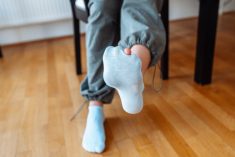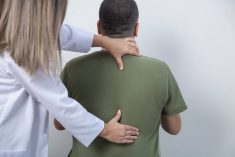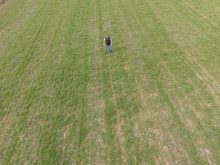Regardless of age, health history or lifestyle, maintaining healthy joints can be a deciding factor in long-term quality of life and well-being.
Normal levels of joint degeneration occur as people age. Certain diseases or genetic conditions can also affect the quality of joint health. That said, disease and age are not necessarily reasons for limited mobility or intrusive sensations like pain.
Joints are classified by the areas where bones connect. There are 360 joints in the adult human body, and each one needs to keep moving in order to remain mobile throughout a lifetime.
Read Also

Health hazards are often overlooked risks on the farm
While quite different from the dangers posed by farm machinery, hazards such as loud noise or sun exposure require the same proactive attention, the Canadian Agricultural Safety Association says.
Joints are nourished by movement, which provides circulation and hydration and also stimulates ongoing maintenance of the joint surfaces. Quite literally, the adage of “use it or lose it” applies.
Even in cases of osteoarthritis, traditionally defined as a wear and tear condition that develops over time, new research suggests the best treatment is to continue moving the affected joint, with impact, to support collagen regeneration within the joint tissue.
How joints move is largely controlled by soft tissues, more specifically the musculoskeletal system. It moves as informed by the nervous system.
Tension, injuries and stress can all affect how muscles move joints. Tension imbalances can sometimes lead to limited joint range of motion, and over the long term, this can cause issues for joint health.
Daily movement important
A good principle to follow is to make a conscious effort to spend a few moments each day moving as many joints as you can. This could look like whole body activities like walking, dancing, weight or resistance training, swimming, yoga, mobility exercises or anything else you enjoy.
Daily mobility can be as simple as picking a few areas of the body (shoulders, hips and ankles, for example) and moving them slowly and mindfully in all directions.
The following are a few specific movements I like.
Knee sways. Laying on your back, bend the knees and place the feet on the surface underneath you. Place the feet a bit wider than the hips, or about as wide as a yoga mat, and slowly let the knees fall to the right and then to the left, like windshield wipers.
This movement will bring mobility into the hips and lower spine and is an excellent one-size-fits-all exercise for the entire body. Repeat this movement for a few moments, or about eight to 10 repetitions in each direction.
Spine roll ups. Stand and then fold forward. Let the knees bend and fold your upper body down towards the ground. Let the torso and head become heavy and rag doll yourself into the fold for a few breaths.
Then slowly roll back up, starting from the tailbone, stacking each vertebra on top of the next as you slowly move back to standing. The shoulders and then the head stack up last. Repeat this by leading with the head to roll yourself back down into the fold.
This movement has been shown to lengthen and mobilize the spinal cord and central nervous system, providing a restorative effect. However, if you have acute back pain, this movement might not be the right starting place. Listen to your body and move slowly.
Shoulder rolls. Draw small, slow circles with the shoulders in each direction about eight to 10 times per direction.
Ankle circles. As with the shoulder rolls, draw slow circles with the toes moving through the ankle joint. Take at least five seconds to complete one circle and repeat eight to 10 times in each direction.
Any of these movements can be done when getting out of bed in the morning, and again as you get into bed in the evening.
Other factors that contribute to joint health include anything that affects nutrient metabolism, circulation, tissue regeneration and health on a cellular level. This includes a balanced diet, which provides the necessary vitamins and minerals for whole body health and supports healthy bones, nourished soft tissues and well oriented joints.
A balanced diet will be different for each individual. The guidance of a well-informed, nutrition-based professional can be an important part of maintaining joint health.
If there is joint pain or other barriers to consistent movement, consult your health-care provider and/or a movement-based professional.
The ability to move, and move often, is one of the most well-researched and proven methods to attain longevity and high quality of life, no matter your age.















